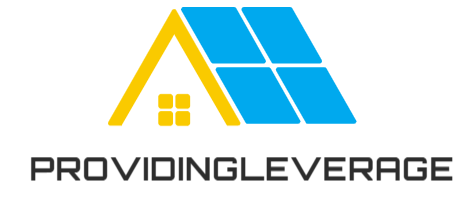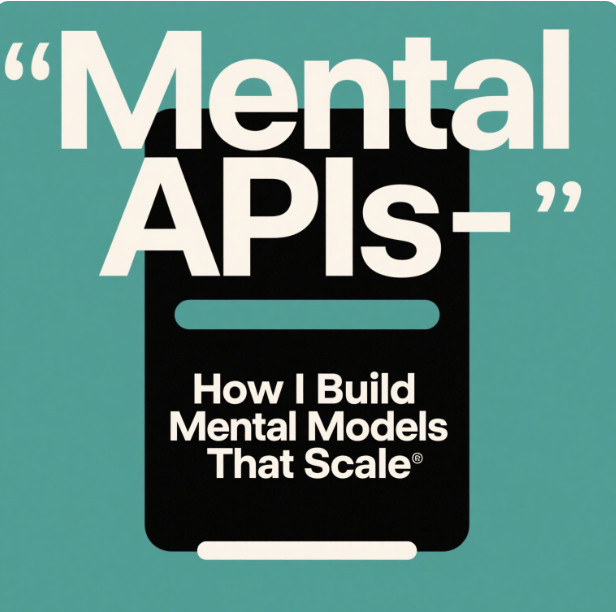In the world of software engineering, APIs—application programming interfaces—are the invisible bridges that let different systems communicate. They’re designed for clarity, reliability, and scalability. And over time, I realized something both surprising and powerful: I could apply the same principles to how I think.
Let’s call them Mental APIs—modular, reusable mental models that make navigating life, work, and learning more scalable and less chaotic.
Much like how engineers build robust software architectures, we can design our thinking to be composable. Instead of treating each new challenge as a standalone problem, we can create internal “interfaces” that help us process information, make decisions, and act with intention—again and again, across different domains.
From Mental Overload to Mental Architecture
At one point in my life, I found myself constantly overwhelmed. New tasks felt like brand-new puzzles every time. Learning something in one area didn’t seem to transfer easily to another. My mind was cluttered with fragmented information, disconnected ideas, and reactive decision-making.
That’s when I started borrowing from software design.
Engineers don’t rewrite the same function over and over—they build reusable components. What if my brain could operate the same way?
This realization pushed me to start building my own library of mental APIs—not a rigid system, but a flexible toolkit I could rely on in moments of uncertainty, pressure, or complexity.
What Is a Mental API?
At its core, a Mental API is a repeatable thinking pattern—a small, well-defined mental function that takes in a situation (or input) and gives you structured clarity (the output). It’s not the same as a belief or opinion. It’s more like a lens: a tool that lets you interpret and respond to your environment.
Here are some examples of Mental APIs I use daily:
- “What’s the opportunity cost?”
→ Helps evaluate trade-offs when making decisions. - “Can this be turned into a system?”
→ Encourages automation and delegation, rather than repetition. - “Is the pain short-term or long-term?”
→ Helps me assess whether something uncomfortable is worth enduring for a longer payoff. - “What would this look like if it were easy?”
→ Breaks through complexity by reframing the problem.
Each one is a mini-framework—short, clear, and consistent. They’re not rules, but tools.
Why This Matters: Cognitive Efficiency
Our mental bandwidth is limited. Decision fatigue is real. And in a world that bombards us with information, having pre-defined ways to process inputs is an edge.
Mental APIs reduce friction. They shrink the time between perception and action. When facing a messy challenge, instead of spiraling into indecision, you can quickly call up a framework and apply it.
Just like clean code, clean thinking scales.
Designing Your Own Mental APIs
The beauty of mental APIs is that they’re personal. What works for me might not work for you—but the design principles are universal. Here’s how you can start building your own:
- Notice Recurring Patterns
Where do you get stuck the most? What types of decisions exhaust you? These are places ripe for creating structure. - Extract the Core Questions
Behind every mental API is a question. Not a yes/no one, but an open-ended, clarifying one. Think of these as function signatures—inputs that lead to deeper understanding. - Keep It Minimal and Memorable
A good mental API should be short enough to recall under stress. No jargon, no complexity—just a clear nudge that brings you back to your core values or goals. - Test and Iterate
Like software, mental models need debugging. Try using one over a week. Did it help? Was the output useful? Don’t hesitate to refine.
Example: The “Signal vs. Noise” API
One of my most-used mental APIs is:
“Is this signal or noise?”
I use it when reading the news, checking social media, or receiving feedback. It helps me filter. Not everything that’s loud or urgent is important. This tiny function helps me stay focused on what matters—especially in a distraction-heavy world.
It doesn’t solve the problem directly. But it shapes how I engage with the input. That’s the power of these tools.
Mental APIs in Teams and Collaboration
Interestingly, this framework isn’t just for personal use—it’s powerful in team settings too.
When a team shares mental models, communication gets faster. Decisions become more aligned. It’s like having a shared codebase for thought. That’s why high-performing teams often develop shared language—naming conventions, metaphors, acronyms—because shared structure creates shared understanding.
If your team operates like a human API network, you begin to think better together.
The Mind as an Operating System
The goal here isn’t to become robotic or over-structured. Quite the opposite. When you externalize and modularize your thinking, you free up your creative energy. You reserve it for solving problems, not managing chaos.
Your mind becomes less of a cluttered desktop and more of a well-designed interface—clean, intuitive, powerful.
That’s the promise of Mental APIs. They don’t give you all the answers, but they make asking the right questions easier.
Final Thoughts
In an age of complexity and acceleration, clarity is a rare and powerful asset. You can’t always control your inputs—but you can shape the tools you use to process them.
So build your own APIs. Start small. Iterate often. And over time, you’ll find that your mental operating system gets smarter—not because you’re learning more, but because you’re thinking better.
And that’s the kind of scalability that lasts.




